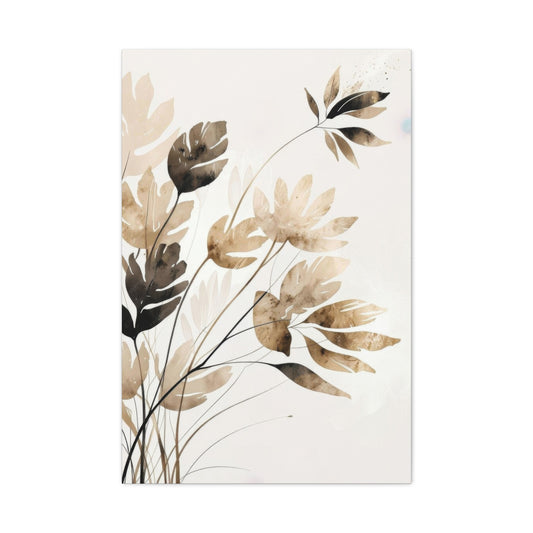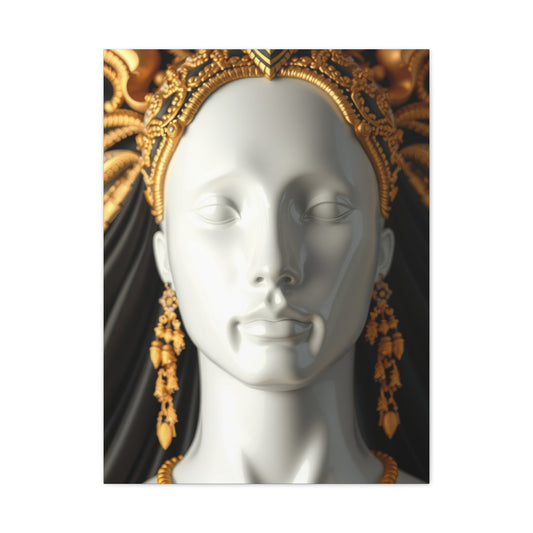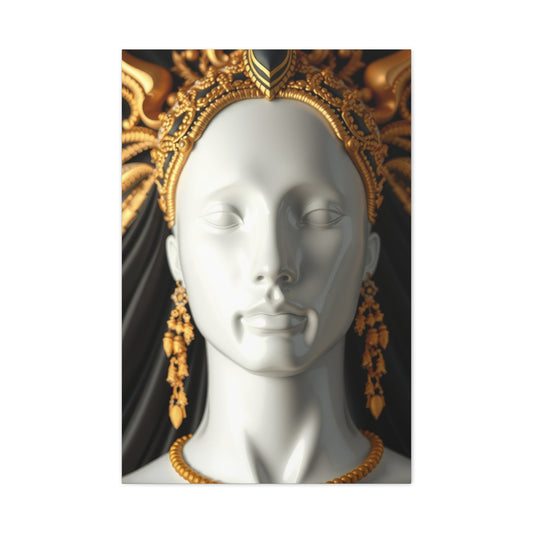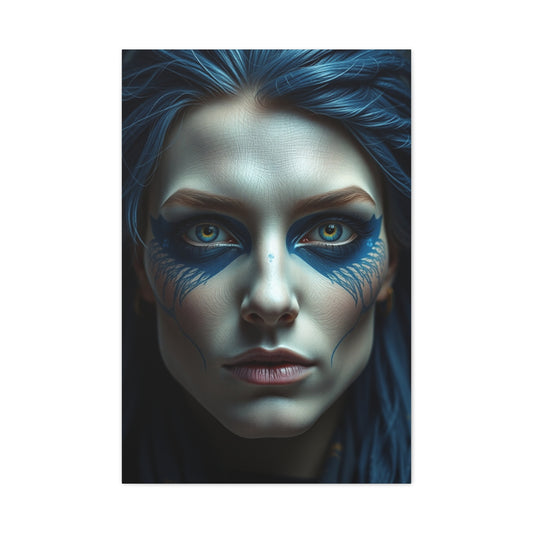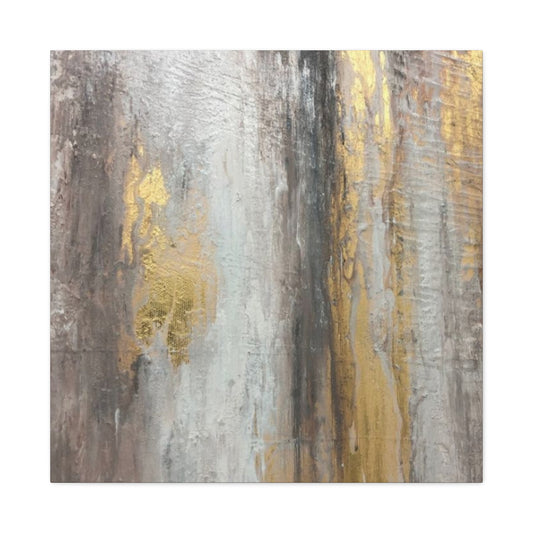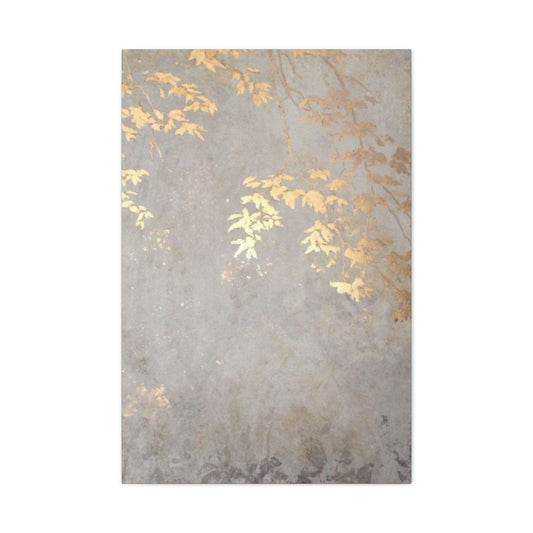Creating the ultimate home theater begins with designing a space that feels both cozy and cinematic. Your goal is to craft an environment where every detail, from seating to lighting, enhances the movie-watching experience. Personalized touches give the space a distinct identity, reflecting your tastes and making the room feel curated rather than generic. For example, exploring personalized prints for media rooms can inspire ways to incorporate unique visuals that resonate with your favorite films and characters, instantly elevating the room’s atmosphere. By thoughtfully integrating tailored elements, you transform ordinary movie nights into memorable cinematic experiences that engage and delight every viewer.
Acoustic Comfort And Sound Balance
Sound quality is just as important as visuals when creating a cinematic environment at home. Soft furnishings, textured surfaces, and layered materials help reduce echo and improve audio clarity without compromising style. Rugs, upholstered seating, and fabric panels contribute to a balanced sound experience while enhancing comfort. Thoughtful placement of speakers combined with sound-absorbing décor ensures dialogue remains crisp and immersive. By focusing on acoustic comfort, you create a space where sound feels enveloping rather than overwhelming, allowing every scene, soundtrack, and whisper to be enjoyed as intended during movie nights.
Choosing A Cohesive Theme
A well-defined theme ensures every design choice contributes to a unified look and feel. From retro cinema club aesthetics to modern minimalist lounges, your theme guides furniture, lighting, and decorative selections. For those drawn to timeless elegance, collections featuring striking monochrome visuals inspire. Browsing through the black and white collection for interiors showcases imagery that adds sophistication while reinforcing a cohesive atmosphere. Anchoring your space around a central motif ensures consistency, enhancing the immersive quality of your home theater and making it a place where guests feel completely transported into the cinematic world you’ve created.
Comfortable And Functional Seating
Comfort is key when designing a room intended for extended movie marathons. Plush sofas, reclining chairs, or sectional lounges create cozy seating zones while accommodating different group sizes. Complementing the seating area with visual focal points, such as the exquisite epoch imagery print, adds a sense of sophistication and draws the eye, tying together the room’s layout and visual appeal. Layering textures with oversized cushions, soft throws, and ergonomic designs ensures everyone has a relaxing spot to enjoy their favorite films. Strategic placement improves sightlines and ensures the screen is visible from every seat.
Color Psychology For Viewing Spaces
Color choices significantly influence how a home theater feels and functions. Darker tones help minimize glare and enhance screen visibility, while warm neutrals create a cozy, inviting atmosphere. Accent shades inspired by cinematic themes can add personality without distracting from the viewing experience. Strategic use of color also affects mood, helping viewers relax and stay engaged for longer periods. When thoughtfully applied, color psychology supports immersion, comfort, and visual harmony, turning the space into a dedicated environment that feels purpose-built for storytelling and shared entertainment.
Lighting For Ambiance
Effective lighting transforms a home theater, balancing functionality with mood. Layered approaches, including dimmable overhead lights, LED strips, and ambient floor lamps, allow for dynamic adjustment based on the scene. For seasonal or thematic inspiration, resources like creative festival message inspirations provide innovative ideas to refresh your room’s energy while maintaining a cohesive cinematic environment. Smart lighting systems can even shift color temperatures to enhance specific genres or create a dramatic effect during suspenseful moments. Accent illumination can highlight key décor or architectural features without distracting from the screen.
Statement Features To Impress
Incorporating statement visuals or décor pieces creates an engaging focal point and adds personality to the room. For design inspiration, consider guides like modern makeover inspiration, which illustrate how to blend striking elements seamlessly into your interior while maintaining harmony with the overall theme. Whether it’s bold geometric shapes, abstract motifs, or themed objects reflecting favorite film genres, these elements communicate style and passion. Integrating statement pieces effectively enhances the aesthetic without overcrowding the space.
Layout Flow And Movement
A successful home theater layout considers how people move through the space before, during, and after movie sessions. Clear pathways prevent disruptions, while intentional zoning separates seating, refreshment, and entry areas. Maintaining an open flow helps the room feel spacious even when accommodating multiple guests. Furniture placement should support easy access without obstructing views or comfort. A well-planned flow enhances usability and ensures that the room remains functional, organized, and welcoming, no matter how frequently it’s used for gatherings or casual viewing.
Curated Memory Displays
A designated area showcasing memories from past movie nights or personal milestones adds warmth and storytelling depth to the home theater. Ticket stubs, film memorabilia, or family photos can be arranged in a curated display that complements the room’s aesthetic. To explore ideas for elegantly presenting meaningful visuals, the memory showcase examples guide offers techniques to celebrate personal moments while keeping the display stylish and coherent. Integrating memory corners transforms your theater into a space that’s both cinematic and sentimental.
Themed Accents For Depth
Subtle themed accents reinforce your chosen design direction without overpowering the room. Small decorative objects, genre-inspired figurines, or color-coordinated accessories add layers of interest and help tell a story. Functional decorative elements, like compact tables or display units, support both organization and visual appeal. Check out ideas in the small coffee tables guide for functional accent pieces that enhance comfort and maintain your room’s visual cohesion. By integrating themed accents thoughtfully, you create a space rich with character and depth.
Balancing Technology With Style
Technology is essential in a modern home theater, but it should blend seamlessly with the overall design. Concealing wires, integrating speakers subtly, and selecting equipment that complements the room’s aesthetic keep the space visually clean. Smart solutions allow advanced technology to enhance comfort without becoming visually dominant. When screens, sound systems, and controls feel integrated rather than intrusive, the room maintains its refined appearance. Striking the right balance between innovation and style ensures your entertainment area feels polished and thoughtfully curated.
Nature-Inspired Visuals
Incorporating elements inspired by nature introduces calmness and texture, balancing the bold energy of movie viewing. For design inspiration, explore collections such as the bird design showcase, which provide creative ways to integrate nature-themed visuals that harmonize with modern interiors and enhance the room’s ambiance. Greenery, organic patterns, and animal motifs help soften the environment while adding visual intrigue. Bird-themed imagery, in particular, can evoke serenity and elegance in a dynamic space.
Floating Display Systems
Floating shelves and display units offer a stylish, functional way to feature collectibles or décor items. Guidance for designing elevated display systems can be found in the floating frames complete guide, which outlines strategies to seamlessly incorporate floating visuals while maintaining a polished and organized look. These installations create depth without obstructing sightlines, allowing your room to remain open and inviting. Layered displays encourage creativity and evolve with your interests over time.
Refreshment Zones For Movie Nights
A dedicated refreshment area adds convenience and elevates the overall movie night experience. Small snack stations, compact storage, or discreet counters keep essentials within reach without disrupting the room’s flow. Organizing refreshments thoughtfully prevents clutter and maintains the cinematic atmosphere. Whether serving popcorn, drinks, or treats, a well-designed refreshment zone enhances comfort and encourages guests to settle in for extended viewing. These small functional additions make movie nights feel effortless and enjoyable, reinforcing the space’s role as an entertainment destination.
Feature Artwork For Dramatic Flair
In addition to smaller accents, dramatic artwork can become the centerpiece of your home theater. Bold, visually striking imagery helps anchor the room and reinforces the theme. The ethereal katana tableau provides an example of visually dynamic artwork that captivates viewers, adds an element of intrigue, and complements the surrounding décor without overwhelming it. Such features enhance both the sophistication and cinematic ambiance of your entertainment space.
Functional Design And Space Planning
A well-planned layout ensures that your home theater is as functional as it is stylish. Thoughtful furniture placement, accessible storage solutions, and clearly defined zones optimize comfort and movement. Multi-purpose furnishings like storage ottomans or display units maximize usability while maintaining the aesthetic. Principles highlighted in kitchen design fundamentals translate well to entertainment areas, emphasizing balance between form and function. Efficient space planning supports an enjoyable, clutter-free viewing experience.
Personal Touches For A Unique Space
Finally, adding personal elements makes your home theater uniquely yours. Curated memorabilia, meaningful objects, and visual elements that reflect your passions ensure the space resonates with everyone who enters. Thoughtful personalization combines with ambient lighting, statement features, and layered textures to create an environment that is both visually captivating and emotionally engaging. This approach guarantees that every movie night is a shared, memorable experience that celebrates your style and love of film.
Designing A Cinematic Atmosphere With Modern Structure
A home theater reaches its full potential when its design balances visual drama with everyday comfort. Clean silhouettes, thoughtful spacing, and intentional structure help transform a viewing area into a refined cinematic retreat. Modern design principles emphasize simplicity without sacrificing impact, making the space feel immersive rather than overwhelming. Incorporating ideas inspired by modern furniture foundations encourages purposeful placement and visual flow that enhances movie viewing. When structural elements work together harmoniously, the environment supports relaxation, focus, and emotional engagement, allowing films to take center stage while the surrounding décor quietly elevates the experience.
Seasonal Styling For Movie Night Ambiance
Refreshing your home theater throughout the year keeps movie nights feeling exciting and relevant. Seasonal styling introduces subtle changes that align the space with holidays, celebrations, or weather shifts without disrupting the core design. Simple updates such as themed imagery, color accents, or decorative props can redefine the atmosphere effortlessly. Inspiration drawn from seasonal photo styling tips helps translate festive storytelling into interior expression. Seasonal updates enhance emotional connection and ensure your movie space feels dynamic, inviting repeat gatherings and shared traditions.
Spatial Zoning For Enhanced Viewing
Effective spatial zoning ensures that every function within a home theater feels intentional and seamless. Clearly defined areas for seating, sound equipment, and relaxation help prevent visual clutter and maintain focus on the screen. Zoning also improves movement flow, allowing viewers to enter, exit, or refresh snacks without disrupting others. Subtle cues such as furniture placement, lighting variation, or texture shifts guide the eye and organize the space naturally. When zoning is thoughtfully executed, the room feels larger, more comfortable, and purpose-built for immersive movie nights.
Framing Visual Elements For Depth And Drama
Presentation matters when it comes to visual storytelling in a home theater. The way imagery is displayed affects scale, balance, and perceived depth, all of which influence immersion. Clean lines, proportional spacing, and thoughtful borders help visuals feel intentional and refined. Guidance from professional framing techniques offers insight into enhancing visual clarity and cohesion without overwhelming the space. When imagery is presented thoughtfully, it supports cinematic storytelling while reinforcing the sophistication of the room.
Architectural Features That Enhance Viewing Flow
Architectural details shape how a home theater feels and functions. Elements such as room openings, transitions, and natural boundaries influence acoustics, lighting control, and movement. Introducing refined architectural accents can elevate the viewing environment while improving spatial flow. Design inspiration from stylish French door concepts demonstrates how thoughtful openings can add drama while maintaining separation when needed. Strategic architectural features enhance both usability and elegance, creating a theater space that feels intentional and refined.
Texture Layering For Visual Depth
Layering textures introduces richness and dimension to a cinematic environment. Soft fabrics, smooth finishes, and tactile surfaces work together to create contrast without overwhelming the senses. Texture helps absorb sound, improve comfort, and elevate the visual experience simultaneously. Balanced layering keeps the space engaging even when the lights are dimmed for viewing. By combining varied materials thoughtfully, the room gains depth and warmth, making it feel luxurious and inviting while still supporting clarity and focus during extended movie sessions.
Color Tones That Support Cinematic Immersion
Color selection plays a crucial role in shaping the emotional impact of movie nights. Cool tones promote calm focus, while deeper hues add richness and intensity. Blue-inspired palettes are particularly effective for creating depth without distraction. Exploring inspiration from blue tone collections highlights how layered shades can enhance atmosphere while supporting screen visibility. When colors are chosen thoughtfully, they reinforce immersion, reduce visual fatigue, and create a soothing environment ideal for extended viewing sessions.
Natural Light Control And Visual Comfort
Managing natural light is essential for maintaining a comfortable viewing experience. Soft filtration, adjustable coverings, and strategic placement help control brightness while preserving elegance. Thoughtful solutions prevent glare without making the space feel enclosed. Ideas drawn from stylish window inspirations translate beautifully into entertainment spaces, offering creative approaches to light control. Proper balance between natural and artificial illumination ensures visual comfort throughout the day while keeping movie nights immersive and distraction-free.
Acoustic Harmony Through Design
Sound quality improves significantly when design elements support acoustic balance. Upholstered furnishings, drapery, and textured surfaces help reduce echo and enhance audio clarity. Thoughtful placement of speakers and sound-reflective materials ensures dialogue remains crisp while background effects feel immersive. Acoustic harmony allows the room to perform as well as it looks, enhancing emotional engagement with every scene. When sound design is integrated into the overall aesthetic, the home theater becomes a refined environment where storytelling feels rich, clear, and enveloping.
Artistic Inspiration Without Visual Clutter
A home theater thrives when creativity is curated rather than excessive. Selective artistic inspiration enhances mood without pulling attention away from the screen. Choosing visuals that complement the room’s tone allows expression while preserving focus. Concepts from stylish art inspirations help refine creative choices that align with cinematic themes. Thoughtful selection prevents clutter and ensures each element contributes meaningfully to the overall atmosphere, keeping the space visually engaging yet balanced.
Creating A Calm And Grounded Viewing Environment
A sense of calm enhances emotional engagement during movie nights. Incorporating elements that promote balance and tranquility helps viewers disconnect from daily stress. Symmetry, gentle lighting, and mindful placement foster a grounded environment. Design philosophy inspired by contemporary pooja shelf ideas encourages intentional spaces that support reflection and serenity. When calmness is woven into the design, the theater becomes a sanctuary where storytelling feels immersive and restorative.
Minimalism For Distraction-Free Viewing
A minimalist approach helps maintain focus on the screen by reducing visual noise. Clean layouts, intentional décor selection, and controlled color palettes prevent unnecessary distractions. Minimalism does not mean emptiness; rather, it emphasizes purpose and balance. Each element should serve a function or contribute meaningfully to the atmosphere. This approach enhances immersion, allowing viewers to fully engage with the film without competing visual stimuli. A thoughtfully minimal design creates a calm, elegant space that supports uninterrupted cinematic enjoyment.
Statement Imagery That Anchors The Space
Every home theater benefits from a defining visual moment that anchors the room’s identity. A striking centerpiece provides focus and reinforces the cinematic theme without overpowering the environment. Thoughtfully selected imagery, such as ethereal maiden artistry, adds elegance and intrigue while supporting the room’s narrative tone. When a focal visual is chosen with care, it enhances emotional depth and strengthens the theater’s aesthetic cohesion.
Long-Term Flexibility And Adaptability
Designing a home theater with flexibility in mind ensures the space remains functional as needs evolve. Modular seating, adjustable lighting, and adaptable layouts allow the room to accommodate different group sizes and viewing preferences. Future-proofing the space prevents frequent redesigns and supports long-term enjoyment. Adaptability ensures the environment remains relevant, comfortable, and visually appealing over time. By planning for change, the home theater becomes a versatile destination for entertainment, relaxation, and shared experiences across seasons and lifestyles.
Ceiling Design And Vertical Visual Impact
The ceiling is often overlooked, yet it plays a significant role in shaping the cinematic experience. Texture, pattern, and subtle detailing draw the eye upward, enhancing spatial depth and acoustics. Creative ceiling concepts add sophistication without distraction. Inspiration from elegant ceiling patterns demonstrates how overhead design can elevate ambiance while supporting sound quality. A refined ceiling completes the immersive environment, making the entire space feel intentional and well-designed.
Defining Visual Identity In Home Theaters
A refined home theater benefits from a strong visual identity that sets the tone for every movie night. This identity acts as the emotional backdrop, shaping how the space feels before the screen even lights up. Carefully chosen visuals introduce mood, movement, and personality, helping the room feel curated rather than improvised. A structured approach inspired by exquisite essence panels demonstrates how layered imagery can anchor the room and guide the eye naturally. When visual identity is intentional, the space becomes immersive, drawing viewers deeper into the cinematic experience from the moment they enter.
Emotional Storytelling Through Visual Design
A thoughtfully designed home theater supports emotional storytelling beyond the screen. Visual elements within the space influence how viewers connect with narratives, shaping mood and anticipation. Soft transitions, balanced compositions, and intentional placement create an environment that feels emotionally responsive. When the surroundings echo the tone of the films being watched, immersion deepens naturally. Visual storytelling within the room becomes an extension of the cinematic experience, allowing viewers to feel fully absorbed in the narrative journey without conscious distraction or interruption.
Sophisticated Color Pairings For Cinematic Balance
Color plays a powerful role in shaping atmosphere, especially in environments dedicated to visual storytelling. Balanced pairings enhance depth while maintaining focus on the screen. Soft greys combined with complementary tones offer a calming yet dramatic foundation that supports extended viewing. Drawing inspiration from grey dual-tone schemes highlights how subtle contrasts can elevate elegance without overpowering the senses. Thoughtful color balance reduces visual fatigue, enhances immersion, and ensures the environment remains comfortable during long movie sessions.
Contrast And Balance For Visual Comfort
Contrast plays a vital role in maintaining visual comfort during movie nights. Balanced light and dark elements prevent eye strain while enhancing depth and clarity. Thoughtful contrast also guides attention, ensuring focus remains on the screen rather than competing features. When contrast is applied with restraint, the space feels dynamic yet soothing. This balance supports longer viewing sessions by reducing fatigue and maintaining visual harmony, allowing the environment to feel refined and supportive rather than overwhelming or visually noisy.
Introducing Aquatic-Inspired Motion
Movement-inspired visuals bring energy and rhythm into a home theater without introducing clutter. Aquatic themes, in particular, create a sense of flow that complements cinematic storytelling. Gentle motion cues relax the mind while keeping the environment visually engaging. Elements inspired by flamingo aqua formations demonstrate how fluid imagery adds life and dimension to entertainment spaces. This approach keeps the atmosphere dynamic while maintaining harmony, ensuring the room feels vibrant yet balanced during every screening.
Visual Cohesion For Immersive Viewing
Visual cohesion ensures that every element in a home theater feels connected and purposeful. When colors, textures, and forms relate harmoniously, the space feels calm and immersive. Cohesion prevents visual fragmentation, allowing the eye to move naturally without distraction. This unified approach supports focus on the screen while subtly enhancing the surrounding atmosphere. A cohesive environment encourages deeper engagement with films, making the room feel like a thoughtfully curated experience rather than a collection of separate design choices. Visual harmony ultimately strengthens immersion and emotional connection during movie nights.
Layering Tranquility With Water Themes
Water-inspired visuals offer calmness and depth, making them ideal for immersive entertainment environments. These themes encourage relaxation while supporting emotional engagement with films. When used thoughtfully, they enhance spatial flow and visual continuity. Concepts reflected in flamingo water scenes show how serene compositions can soften the room’s energy without distracting from the screen. This balance allows viewers to unwind fully, creating a soothing yet captivating environment for movie nights.
Seamless Integration Of Visual Layers
Layering visuals effectively ensures a cohesive and immersive environment. Foreground, midground, and background elements should flow naturally without competing for attention. Seamless integration allows each layer to enhance the next, creating depth and richness. When visual layers are thoughtfully arranged, the room feels expansive and intentional. This approach enhances spatial perception while maintaining clarity, making the home theater feel immersive and refined. Layered design also allows flexibility, enabling subtle updates without disrupting the overall harmony.
Elegant Florals For Cinematic Softness
Floral-inspired visuals introduce softness and sophistication, counterbalancing the technological elements of a home theater. Monochrome floral compositions, in particular, offer refinement while maintaining visual restraint. Drawing from black and white florals reveals how delicate forms can coexist with bold cinematic environments. These elements add texture and elegance, ensuring the space feels inviting and polished while supporting the immersive viewing experience.
Designing For Shared Experiences
A successful home theater supports shared experiences by fostering comfort, interaction, and inclusivity. Seating arrangements, spacing, and ambiance should encourage togetherness while maintaining individual comfort. When the environment feels welcoming and balanced, guests relax more easily and engage with one another naturally. Thoughtful design choices help reduce distractions, allowing viewers to share reactions, laughter, and emotional moments. Designing with shared enjoyment in mind transforms movie nights into memorable social events, reinforcing the home theater as a central gathering place where stories are experienced together.
Creating A Luxurious Visual Rhythm
Luxury in a home theater is defined by balance rather than excess. Rhythmic repetition of refined visuals helps guide attention without overwhelming the senses. Carefully curated elements inspired by fleur de luxe illustrate how opulence can feel controlled and intentional. This rhythm enhances continuity across the room, making the environment feel cohesive and elevated. When luxury is expressed through thoughtful repetition and spacing, movie nights feel more immersive and indulgent.
Mood Enhancement Through Texture
Texture contributes significantly to mood enhancement in entertainment spaces. Soft, tactile surfaces create warmth and comfort, while smoother finishes add refinement. The interplay of textures supports acoustic quality and visual depth simultaneously. When textures are layered thoughtfully, the environment feels balanced and inviting. This sensory richness enhances relaxation and emotional engagement, making movie nights more enjoyable. Texture-driven design encourages viewers to settle in comfortably, reinforcing the space’s role as a cinematic retreat rather than a purely functional room.
Floating Visual Harmony
Visual harmony is essential in maintaining a calm, immersive entertainment space. Light, airy compositions help balance darker tones typically used in theaters. Inspiration from floating harmony visuals demonstrates how gentle forms and spacing create breathing room within the design. This approach prevents visual heaviness, allowing the space to feel open and inviting. Balanced harmony ensures the environment supports focus and comfort throughout extended viewing sessions.
Refinement Through Thoughtful Restraint
Restraint is key to creating a refined cinematic environment. Thoughtful editing of visual elements prevents overcrowding and maintains focus. Each design choice should serve a purpose, contributing to atmosphere or comfort. By embracing restraint, the space feels intentional and polished rather than busy. This refined approach supports immersion, allowing viewers to engage fully with the film. Thoughtful restraint transforms the home theater into a calm, sophisticated setting where storytelling takes precedence.
Strength And Earth Tones For Grounded Atmosphere
Grounded imagery introduces stability and strength, reinforcing a sense of comfort and permanence. Earth-inspired visuals add depth and character while anchoring the space emotionally. Themes inspired by bison buffalo imagery reflect resilience and calm authority, qualities that complement cinematic environments. These elements help balance softer visuals, ensuring the room feels substantial and thoughtfully layered rather than overly delicate.
Visual Flow And Continuity
Maintaining visual flow ensures the home theater feels cohesive and uninterrupted. Continuity across colors, shapes, and finishes helps guide the eye smoothly throughout the space. When transitions are subtle and consistent, the environment feels calming and immersive. Visual flow also supports spatial clarity, preventing the room from feeling fragmented. This continuity enhances the cinematic atmosphere by allowing viewers to remain visually engaged without distraction, creating a seamless backdrop that complements on-screen storytelling.
Dynamic Florals For Visual Energy
Dynamic compositions energize a home theater by introducing movement and contrast. Bold floral-inspired visuals add vibrancy while still supporting narrative immersion. Drawing inspiration from floral explosion design shows how expressive visuals can enhance excitement without overwhelming the space. When placed thoughtfully, dynamic elements stimulate interest and elevate emotional engagement, making movie nights feel more vivid and memorable.
Abstract Florals For Dreamlike Immersion
Abstract floral visuals introduce imagination and depth, encouraging viewers to drift into cinematic worlds. These compositions soften transitions between visual elements and add artistic intrigue. Inspiration from floral phantasmagoria themes demonstrates how dreamlike visuals support immersive storytelling. This artistic layer enhances mood and emotional resonance, ensuring the home theater feels like a creative sanctuary where films unfold with heightened impact.
Creating Intimate Viewing Zones
Intimate viewing zones enhance comfort and personal connection during movie nights. These zones encourage closeness, conversation, and shared experiences. Thoughtful spacing, soft boundaries, and focused lighting help define these areas naturally. When viewers feel comfortably enclosed without feeling confined, immersion increases. Intimate zones foster emotional connection, making the home theater a welcoming destination for family gatherings and small groups. This approach balances openness with privacy, supporting diverse viewing preferences.
Timeless Design For Lasting Appeal
Timeless design ensures the home theater remains relevant and enjoyable over the years. Avoiding overly trendy elements allows the space to age gracefully. Classic proportions, balanced compositions, and restrained detailing support longevity. A timeless approach prioritizes comfort and cohesion over novelty, ensuring the environment remains visually appealing across changing tastes. This longevity enhances emotional attachment to the space, making it a reliable setting for memorable movie nights long into the future.
Conclusion
Designing a home theater that truly elevates movie nights is an exercise in intention, balance, and emotional awareness. At its core, this kind of space is not defined by individual decorative choices but by how every element works together to support immersion, comfort, and connection. When thoughtfully designed, a home theater becomes more than a place to watch films. It transforms into an experience that engages the senses, encourages relaxation, and invites people to linger long after the credits roll. The success of such a space lies in its ability to blend visual appeal with functional clarity while maintaining an atmosphere that feels both special and welcoming.
A cinematic environment thrives on harmony. Visual elements must feel cohesive rather than scattered, allowing the eye to move effortlessly without distraction. This sense of unity supports immersion by ensuring the surroundings never compete with the screen. When colors, textures, and forms are carefully coordinated, the space feels calm and intentional. This visual harmony helps viewers settle in mentally, making it easier to disconnect from the outside world and fully engage with the story unfolding before them. A well-composed environment quietly enhances the emotional impact of every scene.
Comfort is another defining pillar of an elevated movie-night experience. Seating, spacing, and layout all contribute to how relaxed viewers feel over extended periods. Comfort is not only physical but psychological. A space that feels balanced and uncluttered reduces mental noise, allowing attention to remain focused on the narrative. Thoughtful spacing supports natural movement and interaction, ensuring the room feels inviting rather than restrictive. When comfort is prioritized, movie nights shift from a casual activity to a deeply enjoyable ritual.
Lighting plays a subtle yet powerful role in shaping mood and perception. Gentle, layered illumination enhances atmosphere while protecting visual comfort. When brightness levels are carefully controlled, the eyes remain relaxed, and the environment feels enveloping rather than harsh. This balance supports longer viewing sessions without fatigue. Light also influences emotion, guiding the transition from everyday activity into cinematic immersion. The right lighting approach quietly signals that this space is designed for storytelling and shared moments.
Color choices further reinforce emotional tone. Muted, balanced palettes create a grounding backdrop that supports focus, while controlled contrasts add depth and visual interest. Thoughtful color use helps manage energy levels within the space, preventing overstimulation while maintaining richness. This careful balance ensures the environment remains engaging without becoming visually demanding. When color is used with restraint and purpose, it enhances the cinematic atmosphere rather than overwhelming it.
Texture adds another layer of depth, contributing both to visual richness and sensory comfort. Soft surfaces, smooth finishes, and tactile variety make the space feel inviting and complete. Texture also plays a role in shaping sound quality, helping create a more enveloping auditory experience. When textures are layered thoughtfully, they support both comfort and performance, reinforcing the room’s role as a dedicated entertainment environment. This attention to sensory detail elevates the overall experience, making movie nights feel more immersive and refined.
A successful home theater also supports emotional storytelling beyond the screen. The surrounding environment influences how viewers interpret and connect with what they watch. A calm, balanced setting allows emotions to surface naturally, free from distraction. When the space itself feels emotionally aligned with the experience of watching a film, immersion deepens. Viewers become more receptive to subtle moments, dramatic shifts, and shared reactions. The environment becomes a silent partner in the storytelling process.
Equally important is the ability of the space to foster connection. Movie nights are often shared experiences, moments where laughter, tension, and emotion are felt collectively. A thoughtfully designed environment encourages togetherness by supporting conversation before and after viewing while maintaining focus during the film. Seating arrangements, spatial flow, and overall ambiance influence how people interact with one another. When these elements are considered carefully, the space naturally brings people closer, strengthening shared experiences and memories.
Flexibility and longevity are also key considerations. A truly elevated home theater is not rigid or overly trend-driven. Instead, it is designed to adapt gracefully over time. Flexible layouts, timeless design choices, and adaptable features ensure the space remains enjoyable as needs and preferences evolve. This forward-thinking approach prevents the environment from feeling dated or restrictive, allowing it to remain relevant and loved for years to come. Longevity adds emotional value, as the space becomes associated with countless shared moments and traditions.
Restraint is often what distinguishes a refined cinematic space from an overwhelming one. Knowing when to stop, when to simplify, and when to allow elements to breathe creates clarity and elegance. Thoughtful restraint ensures that every design choice serves a purpose, whether functional or emotional. This discipline keeps the environment focused, polished, and immersive. By avoiding excess, the space remains calm and intentional, allowing storytelling to remain the central focus.












